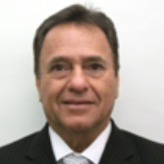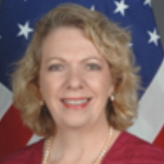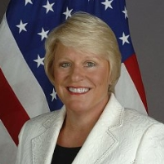Panama
US interference in Panamanian affairs continued in the 1980s, when the US grew tired of its long relationship with military strongman Manuel Noriega, whose drug dealings finally became too much for Washington to handle. In 1989, US Marines swooped into Panama City to take down Noriega’s regime. The ex-dictator was shipped off to the US where he was tried and convicted of numerous drug-related charges. Today, Noriega continues to sit in a US prison, despite being paroled, because of France’s fight to have Noriega extradited to serve time in French prison for other drug trafficking crimes.
Songs Played to Annoy Manuel Noriega (and the Vatican Embassy)
(pages 4-6) (National Security Archive)
Panama: Political and Economic Conditions and U.S. Relations
(by Mark Sullivan and Justin Rivas, Congressional Research Service) (PDF)
Congressional Budget for Foreign Operations (pages 641-644)
(PDF)
Spadafora Sentences Journalist to Two Years in Prison (article translated from La Prensa)
Appointment: Dec 17, 1903
Termination of Mission: Left Panama Feb 2, 1904
Note: Buchanan had presented credentials as Envoy Extraordinary and Minister Plenipotentiary on special mission in Dec 1903; he received new credentials as Envoy Extraordinary and Minister Plenipotentiary only a few days before he was to leave Panama and apparently did not present them. He ceased to act "on special mission," however, and conducted business in the capacity of Envoy Extraordinary and Minister Plenipotentiary until his departure.
Appointment: Mar 17, 1904
Presentation of Credentials: Jul 22, 1904
Termination of Mission: Left Panama May 13, 1905
Appointment: Jul 3, 1905
Presentation of Credentials: Aug 7, 1905
Termination of Mission: Left post Sep 25, 1906
Note: Commissioned during a recess of the Senate; recommissioned after confirmation on Dec 16, 1905.
Appointment: Oct 20, 1906
Presentation of Credentials: Nov 8, 1906
Termination of Mission: Left post Aug 3, 1909
Note: Commissioned during a recess of the Senate; recommissioned after confirmation on Dec 6, 1906.
Appointment: Dec 21, 1909
Presentation of Credentials: Mar 26, 1910
Termination of Mission: Presented recall, Jul 19, 1910
Appointment: Jun 24, 1910
Presentation of Credentials: Sep 24, 1910
Termination of Mission: Left Panama Dec 1, 1910
Appointment: Jul 6, 1911
Presentation of Credentials: Nov 9, 1911
Termination of Mission: Left post Jun 10, 1913
Appointment: Aug 20, 1913
Presentation of Credentials: Oct 11, 1913
Termination of Mission: Presented recall, Dec 28, 1921
Appointment: Oct 8, 1921
Presentation of Credentials: Dec 28, 1921
Termination of Mission: Left Panama Jan 5, 1930
Appointment: Dec 16, 1929
Presentation of Credentials: Mar 14, 1930
Termination of Mission: Left Panama Sep 20, 1933
Appointment: Aug 28, 1933
Presentation of Credentials: Oct 11, 1933
Termination of Mission: Left Panama Jan 9, 1935
Note: Commissioned during a recess of the Senate; recommissioned after confirmation on Jan 15, 1934.
Appointment: Dec 10, 1934
Note: Commissioned during a recess of the Senate; did not serve under this appointment.
Appointment: Jan 22, 1935
Presentation of Credentials: Mar 8, 1935
Termination of Mission: Left post Jul 7, 1937
Appointment: Aug 9, 1937
Presentation of Credentials: Sep 2, 1937
Termination of Mission: Left post Jun 14, 1939
Appointment: Mar 23, 1939
Presentation of Credentials: Jul 14, 1939
Termination of Mission: Left Panama Apr 21, 1941
Appointment: Feb 11, 1941
Presentation of Credentials: May 23, 1941
Termination of Mission: Left post Sep 23, 1943
Appointment: Mar 21, 1944
Presentation of Credentials: Jun 22, 1944
Termination of Mission: Left post Jan 5, 1945
Appointment: Feb 9, 1945
Note: Did not serve under this appointment.
Appointment: Aug 17, 1945
Note: Commissioned during a recess of the Senate; did not serve under this appointment.
Appointment: Sep 14, 1945
Presentation of Credentials: Nov 1, 1945
Termination of Mission: Left post Feb 20, 1948
Appointment: Feb 26, 1948
Presentation of Credentials: May 28, 1948
Termination of Mission: Left post Jan 24, 1951
Appointment: Jun 20, 1951
Presentation of Credentials: Jul 25, 1951
Termination of Mission: Left post Nov 27, 1953
Appointment: Oct 1, 1953
Presentation of Credentials: Jan 22, 1954
Termination of Mission: Left post May 29, 1955
Note: Commissioned during a recess of the Senate; recommissioned after confirmation on Jan 26, 1954.
Appointment: Jul 27, 1955
Presentation of Credentials: Aug 30, 1955
Termination of Mission: Left post Jul 14, 1960
Appointment: Jun 24, 1960
Presentation of Credentials: Aug 29, 1960
Termination of Mission: Left post Aug 31, 1963
Appointment: Apr 8, 1964
Presentation of Credentials: May 6, 1964
Termination of Mission: Left Panama Feb 27, 1965
Appointment: May 6, 1965
Presentation of Credentials: May 13, 1965
Termination of Mission: Left post Sep 6, 1969
Appointment: Sep 15, 1969
Presentation of Credentials: Oct 31, 1969
Termination of Mission: Left post Mar 14, 1974
Appointment: Sep 11, 1972
Note: Died in the U.S. before taking oath of office.
Appointment: Feb 11, 1974
Presentation of Credentials: Apr 17, 1974
Termination of Mission: Left post Aug 25, 1978
Appointment: Sep 23, 1978
Presentation of Credentials: Oct 6, 1978
Termination of Mission: Left post Jul 15, 1982
Appointment: Sep 30, 1982
Presentation of Credentials: Oct 29, 1982
Termination of Mission: Left post Feb 24, 1986
Appointment: Mar 4, 1986
Presentation of Credentials: Apr 4, 1986
Termination of Mission: Left post Jan 3, 1990
Appointment: Jan 2, 1990
Presentation of Credentials: Jan 9, 1990
Termination of Mission: Left post Feb 12, 1994
Note: Commissioned during a recess of the Senate; recommissioned after confirmation on Apr 6, 1990.
Note: Nomination of June 8, 1994 not acted upon by the Senate; withdrawn Jan 31, 1995.
Appointment: Oct 3, 1995
Presentation of Credentials: Nov 7, 1995
Termination of Mission: Left post Oct 13, 1998
Appointment: Oct 22, 1998
Presentation of Credentials: Feb 26, 1999
Termination of Mission: Left post Mar 1, 2001
Appointment: Nov 15, 2002
Presentation of Credentials: Dec 17, 2002
Termination of Mission: Left post, Jun 3, 2005
Appointment: May 31, 2005
Presentation of Credentials: Sep 9, 2005
Termination of Mission: Left post August 2008
 Jaramillo, Mario
Jaramillo, Mario
Mario E. Jaramillo has served as ambassador of Panama to the United States since February 2011.
- Table of Contents
- News
- Overview
- Basic Information
- History
- Newspapers
- History of U.S. Relations with Panama
- Current U.S. Relations with Panama
- Where Does the Money Flow
- Controversies
- Human Rights
- Debate
- Past Ambassadors
- Ambassador to the U.S.
- Embassy Web Site in the U.S.
- Comments
- Leave a comment
U.S. Ambassador to Panama

Phyllis M. Powers has come a long way from her days as a medical technologist in the 1970s. Powers was nominated by President Barack Obama in July 2010 to become ambassador to Panama. She was confirmed by the Senate on August 8.
Previous U.S. Ambassador to Panama

Barbara J. Stephenson was sworn in as the US Ambassador to Panama on July 10, 2008. Stephenson holds a bachelors, masters and PhD in English literature, all from the University of Florida. She speaks Spanish and Dutch and reads French.
US interference in Panamanian affairs continued in the 1980s, when the US grew tired of its long relationship with military strongman Manuel Noriega, whose drug dealings finally became too much for Washington to handle. In 1989, US Marines swooped into Panama City to take down Noriega’s regime. The ex-dictator was shipped off to the US where he was tried and convicted of numerous drug-related charges. Today, Noriega continues to sit in a US prison, despite being paroled, because of France’s fight to have Noriega extradited to serve time in French prison for other drug trafficking crimes.
Songs Played to Annoy Manuel Noriega (and the Vatican Embassy)
(pages 4-6) (National Security Archive)
Panama: Political and Economic Conditions and U.S. Relations
(by Mark Sullivan and Justin Rivas, Congressional Research Service) (PDF)
Congressional Budget for Foreign Operations (pages 641-644)
(PDF)
Spadafora Sentences Journalist to Two Years in Prison (article translated from La Prensa)
Appointment: Dec 17, 1903
Termination of Mission: Left Panama Feb 2, 1904
Note: Buchanan had presented credentials as Envoy Extraordinary and Minister Plenipotentiary on special mission in Dec 1903; he received new credentials as Envoy Extraordinary and Minister Plenipotentiary only a few days before he was to leave Panama and apparently did not present them. He ceased to act "on special mission," however, and conducted business in the capacity of Envoy Extraordinary and Minister Plenipotentiary until his departure.
Appointment: Mar 17, 1904
Presentation of Credentials: Jul 22, 1904
Termination of Mission: Left Panama May 13, 1905
Appointment: Jul 3, 1905
Presentation of Credentials: Aug 7, 1905
Termination of Mission: Left post Sep 25, 1906
Note: Commissioned during a recess of the Senate; recommissioned after confirmation on Dec 16, 1905.
Appointment: Oct 20, 1906
Presentation of Credentials: Nov 8, 1906
Termination of Mission: Left post Aug 3, 1909
Note: Commissioned during a recess of the Senate; recommissioned after confirmation on Dec 6, 1906.
Appointment: Dec 21, 1909
Presentation of Credentials: Mar 26, 1910
Termination of Mission: Presented recall, Jul 19, 1910
Appointment: Jun 24, 1910
Presentation of Credentials: Sep 24, 1910
Termination of Mission: Left Panama Dec 1, 1910
Appointment: Jul 6, 1911
Presentation of Credentials: Nov 9, 1911
Termination of Mission: Left post Jun 10, 1913
Appointment: Aug 20, 1913
Presentation of Credentials: Oct 11, 1913
Termination of Mission: Presented recall, Dec 28, 1921
Appointment: Oct 8, 1921
Presentation of Credentials: Dec 28, 1921
Termination of Mission: Left Panama Jan 5, 1930
Appointment: Dec 16, 1929
Presentation of Credentials: Mar 14, 1930
Termination of Mission: Left Panama Sep 20, 1933
Appointment: Aug 28, 1933
Presentation of Credentials: Oct 11, 1933
Termination of Mission: Left Panama Jan 9, 1935
Note: Commissioned during a recess of the Senate; recommissioned after confirmation on Jan 15, 1934.
Appointment: Dec 10, 1934
Note: Commissioned during a recess of the Senate; did not serve under this appointment.
Appointment: Jan 22, 1935
Presentation of Credentials: Mar 8, 1935
Termination of Mission: Left post Jul 7, 1937
Appointment: Aug 9, 1937
Presentation of Credentials: Sep 2, 1937
Termination of Mission: Left post Jun 14, 1939
Appointment: Mar 23, 1939
Presentation of Credentials: Jul 14, 1939
Termination of Mission: Left Panama Apr 21, 1941
Appointment: Feb 11, 1941
Presentation of Credentials: May 23, 1941
Termination of Mission: Left post Sep 23, 1943
Appointment: Mar 21, 1944
Presentation of Credentials: Jun 22, 1944
Termination of Mission: Left post Jan 5, 1945
Appointment: Feb 9, 1945
Note: Did not serve under this appointment.
Appointment: Aug 17, 1945
Note: Commissioned during a recess of the Senate; did not serve under this appointment.
Appointment: Sep 14, 1945
Presentation of Credentials: Nov 1, 1945
Termination of Mission: Left post Feb 20, 1948
Appointment: Feb 26, 1948
Presentation of Credentials: May 28, 1948
Termination of Mission: Left post Jan 24, 1951
Appointment: Jun 20, 1951
Presentation of Credentials: Jul 25, 1951
Termination of Mission: Left post Nov 27, 1953
Appointment: Oct 1, 1953
Presentation of Credentials: Jan 22, 1954
Termination of Mission: Left post May 29, 1955
Note: Commissioned during a recess of the Senate; recommissioned after confirmation on Jan 26, 1954.
Appointment: Jul 27, 1955
Presentation of Credentials: Aug 30, 1955
Termination of Mission: Left post Jul 14, 1960
Appointment: Jun 24, 1960
Presentation of Credentials: Aug 29, 1960
Termination of Mission: Left post Aug 31, 1963
Appointment: Apr 8, 1964
Presentation of Credentials: May 6, 1964
Termination of Mission: Left Panama Feb 27, 1965
Appointment: May 6, 1965
Presentation of Credentials: May 13, 1965
Termination of Mission: Left post Sep 6, 1969
Appointment: Sep 15, 1969
Presentation of Credentials: Oct 31, 1969
Termination of Mission: Left post Mar 14, 1974
Appointment: Sep 11, 1972
Note: Died in the U.S. before taking oath of office.
Appointment: Feb 11, 1974
Presentation of Credentials: Apr 17, 1974
Termination of Mission: Left post Aug 25, 1978
Appointment: Sep 23, 1978
Presentation of Credentials: Oct 6, 1978
Termination of Mission: Left post Jul 15, 1982
Appointment: Sep 30, 1982
Presentation of Credentials: Oct 29, 1982
Termination of Mission: Left post Feb 24, 1986
Appointment: Mar 4, 1986
Presentation of Credentials: Apr 4, 1986
Termination of Mission: Left post Jan 3, 1990
Appointment: Jan 2, 1990
Presentation of Credentials: Jan 9, 1990
Termination of Mission: Left post Feb 12, 1994
Note: Commissioned during a recess of the Senate; recommissioned after confirmation on Apr 6, 1990.
Note: Nomination of June 8, 1994 not acted upon by the Senate; withdrawn Jan 31, 1995.
Appointment: Oct 3, 1995
Presentation of Credentials: Nov 7, 1995
Termination of Mission: Left post Oct 13, 1998
Appointment: Oct 22, 1998
Presentation of Credentials: Feb 26, 1999
Termination of Mission: Left post Mar 1, 2001
Appointment: Nov 15, 2002
Presentation of Credentials: Dec 17, 2002
Termination of Mission: Left post, Jun 3, 2005
Appointment: May 31, 2005
Presentation of Credentials: Sep 9, 2005
Termination of Mission: Left post August 2008
 Jaramillo, Mario
Jaramillo, Mario
Mario E. Jaramillo has served as ambassador of Panama to the United States since February 2011.
Comments
U.S. Ambassador to Panama

Phyllis M. Powers has come a long way from her days as a medical technologist in the 1970s. Powers was nominated by President Barack Obama in July 2010 to become ambassador to Panama. She was confirmed by the Senate on August 8.
Previous U.S. Ambassador to Panama

Barbara J. Stephenson was sworn in as the US Ambassador to Panama on July 10, 2008. Stephenson holds a bachelors, masters and PhD in English literature, all from the University of Florida. She speaks Spanish and Dutch and reads French.







Comments